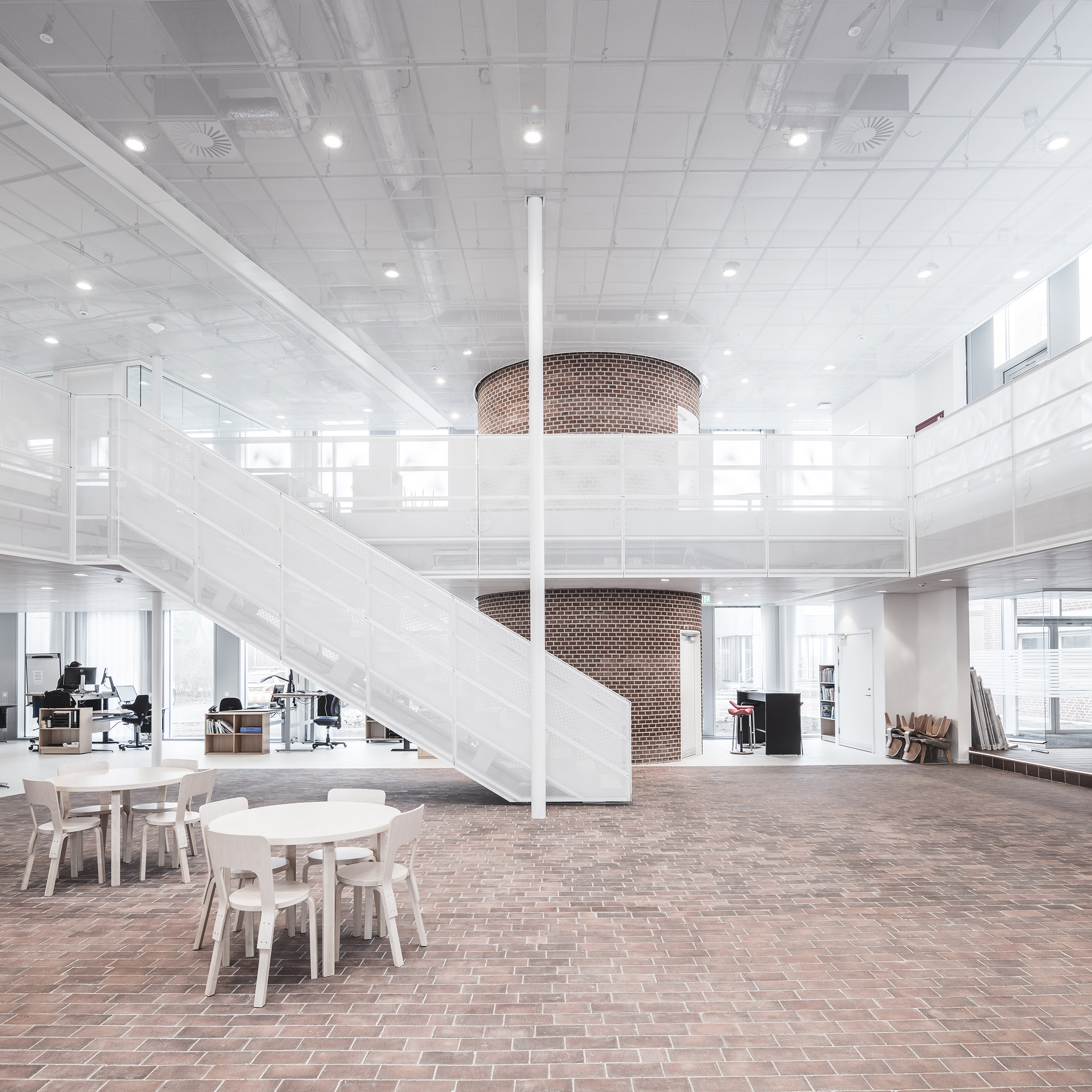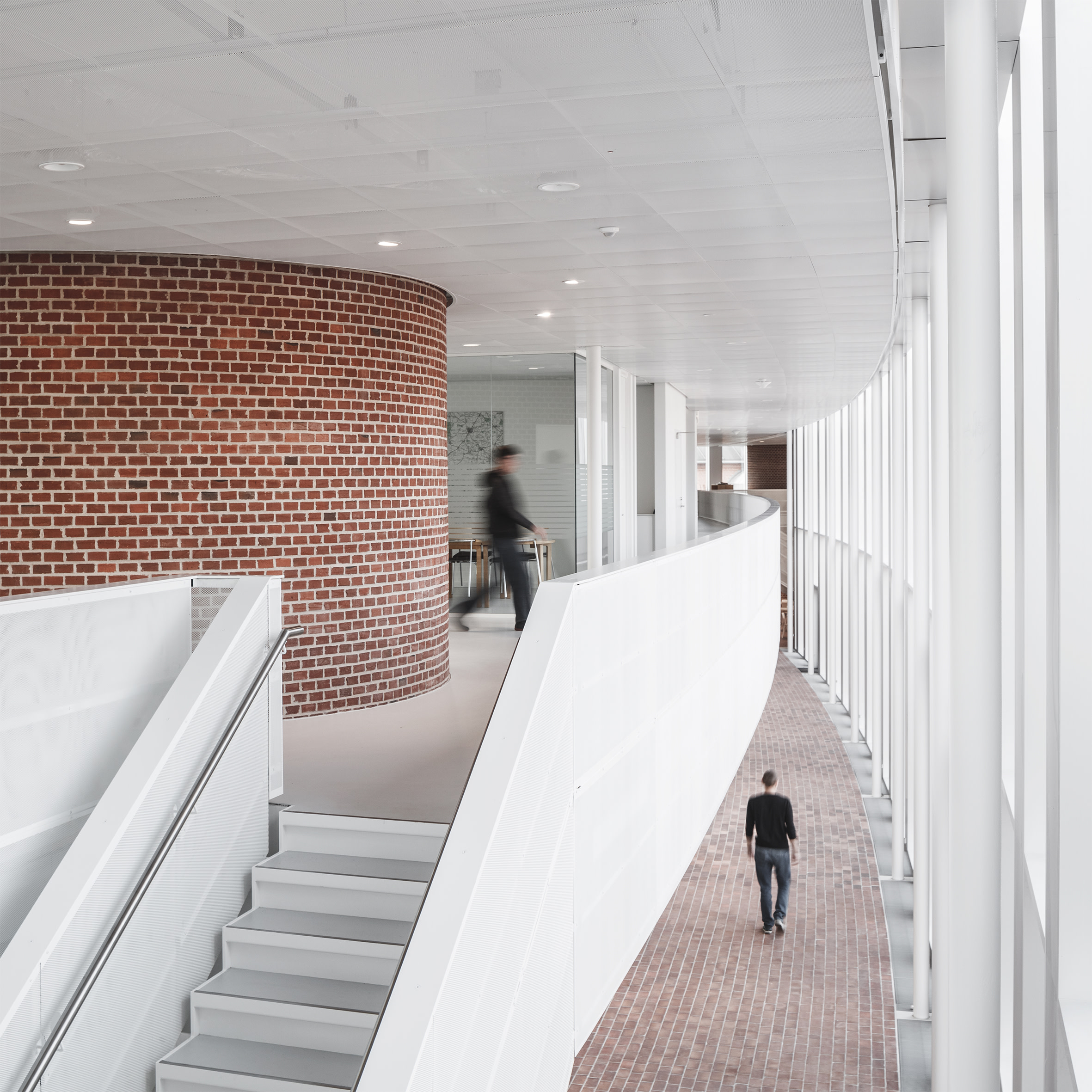Søren Leth, architect and co-founder
of SLETH
The Danish architectural firm SLETH was founded in 2009 by partners and architects Søren Leth and Rasmus Therkildsen. The studio works nationally and internationally to develop cities, buildings and landscapes that reinvent, utilise, and rethink the existing industrial, cultural, and natural heritage to create a sustainable and responsible future for generations to come.

“When I think of a specific architectural experience that moves me, my thoughts circle around Aarhus University, or a design solution found in Herning, where a sculpture park, a museum, and a production company somehow melt together – it simply fits”, Søren Leth recalled. To Leth, great architecture is about that unique connection between the building and the landscape in which it is set.
Especially cities, and the dynamics and power they have interests Leth. “Cities are full of meetings between different spaces, situations, and functions: urban spaces, squares, streets, and alleys that meet the buildings. Palais Royal in Paris is a little magical gem, and an oasis of silence emerges in the inner courtyard. When the boundaries between outside and inside merge – or are allowed to mix with each other – to me, something very special happens”, he said and continued: “On a more academic level, I have always found great experiences in Rem Koolhaas's works. There are so many discussions in his architecture that have to do with the city and its life.”


When it comes to Danish sources of inspiration, Leth dwells on cultural bearers such as landscape architects C. Th. Sørensen and Sven Hansen. They succeed in creating the best meeting between buildings, cities, and the landscape.
“What is special about the landscape architects and architects from around the 30s and right up to the 80s is that they were really good at making landscape, city and building work together. I also admire architects C.F Møller and Kay Fisker - and such somewhat sober modernists of the time - up to recent times with e.g. Friis & Moltke. Rasmus and I greatly appreciate them because their work is coherent, simple, and straightforward to understand, and because they have a great focus on good spaces and materials”, he said.


A typical SLETH design is based in the setting, and the context – what already exists. “We try to find what is essential and bring it out. And then we pair it – the spirit of the place – with the pragmatic need, which must be solved in combination with the means of architecture; light, air, scale, materials, which together create an experience of a place you can relate to and be comfortable in”, he explained and continued: “We decode a place, a need, and the surroundings through a thorough analysis, which we try to express in a design that is equal parts pragmatics, poetry, experience, and economy.”
The studio also tries to incorporate an element of surprise in their designs. For examples, the SLETH studio in Aarhus which they designed themselves, not only fits into the context, but it articulates a comment to its surroundings. “When we talk a lot about the relationship with the place, it is not because we design based on the thought that everything must 'fit in'. Our projects are more about reflecting the surroundings than adapting to them or mirror images of them”, he said.
Every project developed by SLETH is initiated with a question: “What can we preserve”? In the name of sustainability, Leth emphasises the need for everyone to strive toward a more sustainable future of design. This transition depends on cooperation – municipally, from the client's side, the contractor, suppliers and from the political side with legislation in the area.
“Fortunately, today we experience a greater willingness to preserve and transform. At SLETH, we focus on making the right choices – the wise choices in the long run. And then we also need to be creative in our design choices. Now, there are many resource banks around the country where we can reuse and upcycle materials and fixtures”, he said.

To SLETH great architecture leaves a mark while solving tangible needs, whether it is an interior or an exterior space, but at the same time the architecture also creates an experience around the solution. Leth explains: “You don't need to make guesswork or obvious concepts. Although, the design must awaken something in our souls - create experiences. This is something we, at SLETH, value and work with. We solve the needs – we are pragmatic, but we always try to introduce the poetic.”
People and architecture correlate when you create spaces that positively affect our bodies and minds, Leth argues. And indoor climate plays a substantial part. “The sustainability tools that we use a lot today – e.g., DGNB – help increase the focus of indoor climate, light and air, which demonstrably has a positive impact on human health and well-being. It leads back to the resources of architecture. If we think carefully, we can create spaces that are pleasant to be in - both for our bodies and souls”, he explained.
Speaking of well-being, it makes sense to SLETH to keep materials untreated whenever possible. “The wood, concrete, steel, textile, or other surfaces must appear as they are. When the material is raw, it is easy to read and helps create a feeling and an atmosphere within the space. It patinates beautifully too and is often far more maintenance-free”, he said.
The importance of materials and how they affect us, is determined by the counterplay and interaction between the different materials. To Leth, the composite provides diversity and challenges the senses through a wealth of experiences.
